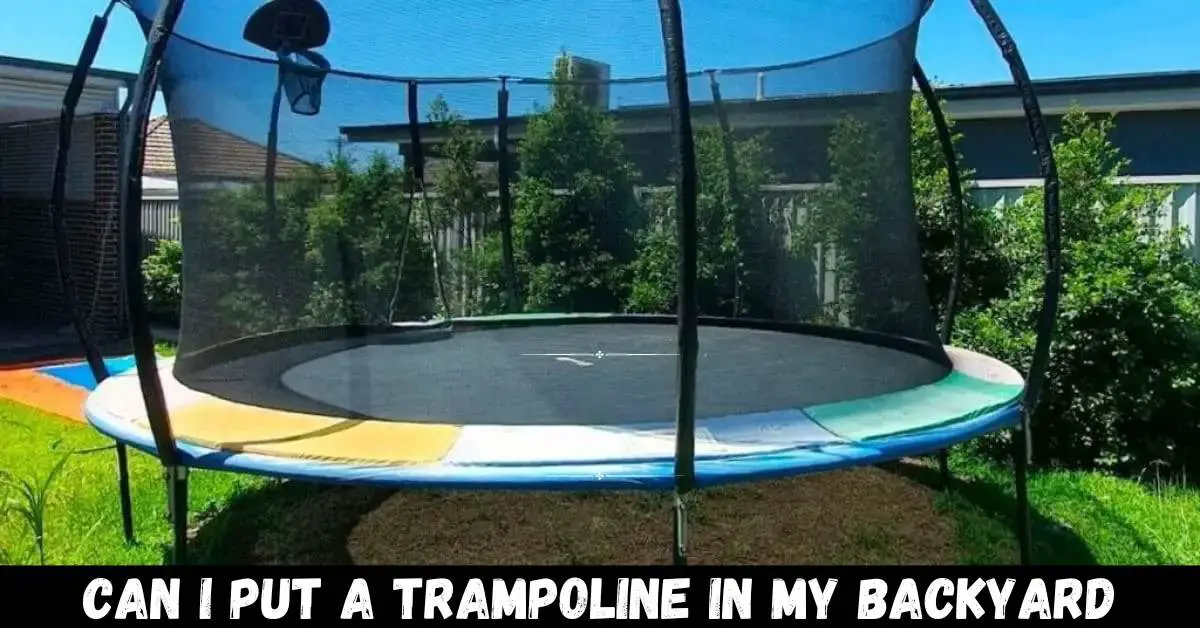Imagine bouncing high in the air, performing flips and somersaults, and experiencing a thrilling sense of weightlessness right in the comfort of your own backyard.
If you’ve ever entertained the idea of owning a trampoline, you’re not alone. Trampolines have become increasingly popular recreational items for both children and adults, providing hours of fun and physical activity.
Before taking the leap and purchasing a trampoline, you might have questions about the feasibility and practicality of installing one in your backyard. In this article, we will explore the factors to consider when deciding whether you can put a trampoline in your backyard.
From assessing the available space and safety considerations to understanding local regulations and maintenance requirements, we will delve into the key aspects that will help you make an informed decision.
By the end of this guide, you will have a clearer understanding of the necessary steps to take before installing a trampoline and whether it is a suitable option for your backyard.
So, if you’ve ever wondered, “Can I put a trampoline in my backyard?” keep reading to discover the essential information and guidance you need to make an educated choice about bringing the joy and excitement of trampolining into your own outdoor space.
Can I put a trampoline in my backyard? Whether you can put a trampoline in your backyard depends on local regulations and safety considerations. Check your local zoning laws and ensure proper safety measures before installing one.
Can I put a trampoline in my backyard?
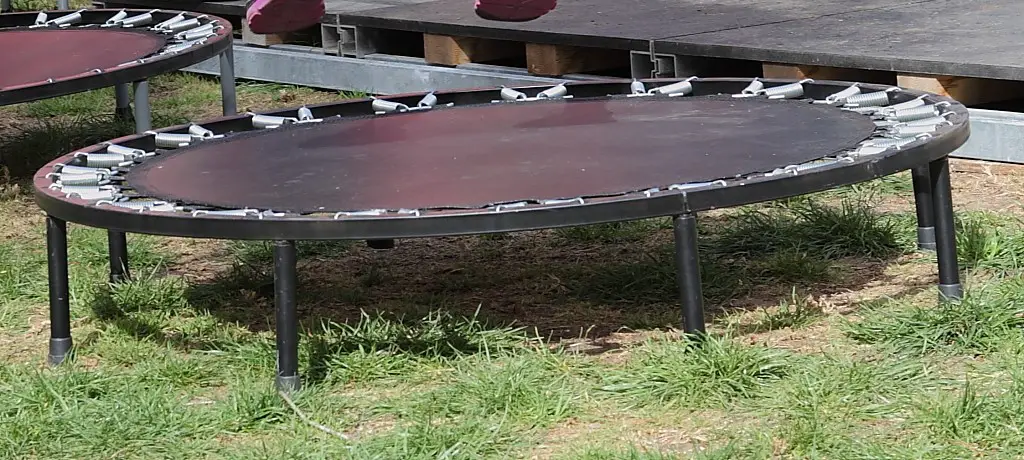
Yes, you can typically put a trampoline in your backyard, but there are a few things to consider before doing so. Here are some important points to keep in mind:
- Local regulations:
- Available space:
- Safety precautions:
- Maintenance:
- Insurance considerations:
Assessing Feasibility for Trampoline Installation
When considering the installation of a trampoline, it is essential to conduct a thorough assessment of the project’s feasibility. This assessment involves several key factors, including reviewing local regulations, evaluating available space, and considering potential safety hazards.
By addressing these aspects, you can make an informed decision about whether or not to proceed with the trampoline installation.
Local Regulations and Restrictions:
Start by researching the local regulations and restrictions regarding trampoline installations in your area. Contact the relevant authorities or consult municipal codes to understand any specific guidelines, permits, or restrictions associated with trampoline ownership.
This step ensures compliance with local laws and avoids any potential legal issues in the future.
Evaluate Available Space:
Next, evaluate the available space where you plan to install the trampoline. Ensure that the area is suitable and meets the necessary requirements. Consider the following aspects:
Sufficient Size: The space should be large enough to accommodate the trampoline with adequate clearance on all sides. Refer to the manufacturer’s recommendations for the specific dimensions required for the trampoline model you intend to install.
Level Ground: The ground should be level and free from any obstructions or slopes. Uneven terrain can affect the stability and safety of the trampoline, so it’s important to ensure a flat surface for installation.
Overhead Clearance: Check for any overhanging branches, power lines, or structures that could interfere with the trampoline. Maintain a safe distance between the trampoline and any potential hazards to avoid accidents.
Consider Potential Safety Hazards and Mitigation:
Trampolines pose certain safety risks, so it’s crucial to identify and mitigate potential hazards. Take the following steps to enhance safety:
Enclosure and Safety Net: Consider installing an enclosure or safety net around the trampoline. This helps prevent users from falling off the trampoline and minimizes the risk of injuries. Ensure that the enclosure or net is durable, properly installed, and compliant with safety standards.
Padding and Cushioning: Check if the trampoline comes with adequate padding on the frame, springs, and surrounding areas. If not, consider purchasing additional padding to minimize the risk of accidental injuries caused by impact.
Maintenance and Inspections: Establish a regular maintenance routine and conduct thorough inspections of the trampoline. Check for any wear and tear, loose components, or damage that could compromise safety. Follow the manufacturer’s maintenance guidelines and promptly address any issues.
Safety Rules and Supervision: Establish clear safety rules for trampoline usage and ensure they are communicated to all users. Encourage adult supervision, especially for younger children, to minimize the risk of accidents.
By conducting a comprehensive assessment of local regulations, available space, and safety hazards, you can make an informed decision about the feasibility of a trampoline installation. Prioritizing safety and compliance will help create a safe and enjoyable trampolining experience for users.
Safety Considerations for Trampoline Usage
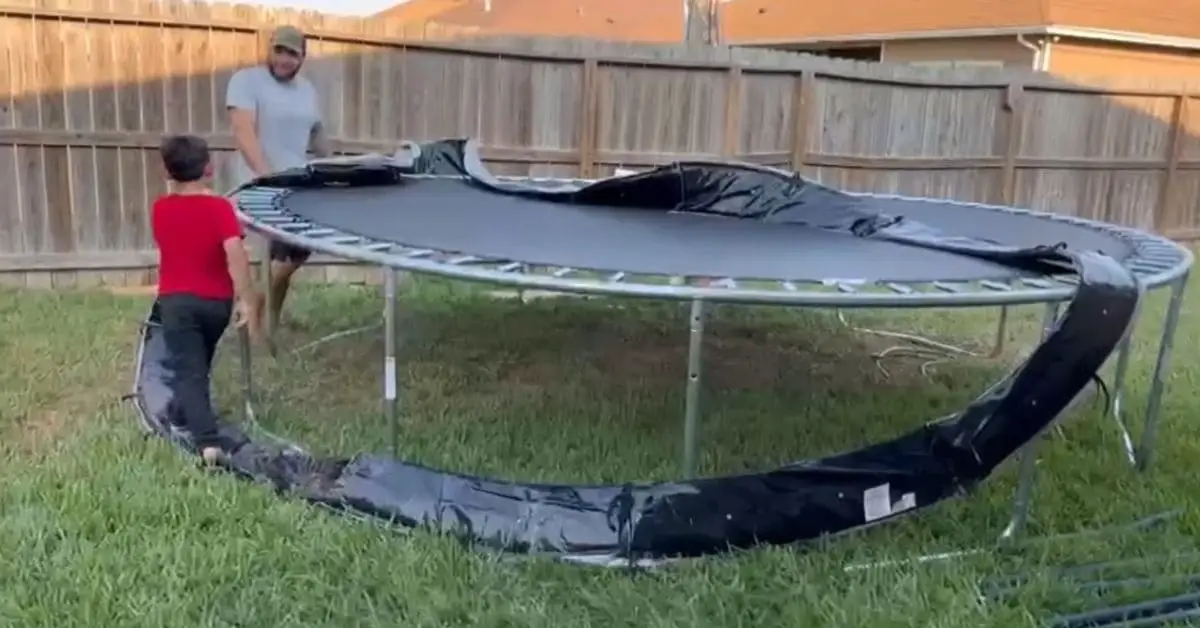
Trampolines provide a fun recreational activity, but it’s crucial to prioritize safety to prevent accidents and injuries.
Here are recommended safety measures, the importance of proper installation and maintenance, as well as safety accessories and guidelines for their use:
Recommended Safety Measures for Trampoline Usage:
Adult Supervision: Ensure that responsible adults supervise trampoline usage. Children should never use a trampoline without proper adult supervision.
One Jumper at a Time: Allow only one person to use the trampoline at a time to avoid collisions and reduce the risk of injuries.
Age and Weight Restrictions: Follow the manufacturer’s guidelines for trampoline users’ age and weight restrictions. Different trampoline models have specific weight limits, and exceeding them can compromise safety.
Proper Jumping Techniques: Encourage users to practice safe jumping techniques, such as keeping jumps controlled and avoiding somersaults or flips that can lead to injuries.
No Rough Play: Discourage rough play or stunts on the trampoline, as they increase the risk of accidents. Users should refrain from pushing, wrestling, or attempting dangerous tricks.
Clear Trampoline Surroundings: Keep the area around the trampoline clear of any objects or obstructions that could pose a hazard during use.
Importance of Proper Installation and Maintenance:
Secure Anchoring: Ensure that the trampoline is properly anchored to the ground to prevent tipping or shifting during use. Follow the manufacturer’s instructions for anchoring methods specific to your trampoline model.
Level Ground: Install the trampoline on a level surface to maintain stability and reduce the risk of tipping.
Regular Inspections: Conduct routine inspections to check for any damage, wear and tear, or loose components. Repair or replace any damaged parts promptly.
Spring Maintenance: Regularly inspect and tighten the trampoline springs to ensure they are in good condition and properly attached.
Weather Protection: Protect the trampoline from adverse weather conditions, such as strong winds or heavy snow, by using covers or storing it indoors when not in use.
Safety Accessories and Guidelines for Their Use:
Safety Enclosures: Install a safety enclosure or net around the trampoline to prevent users from falling off. Ensure that the enclosure is properly secured and free from any gaps or tears.
Padding and Cushioning: Use appropriate padding on the frame, springs, and surrounding areas to minimize the risk of injuries from impact. Check the padding regularly for wear and tear and replace it when necessary.
Ladder Safety: If using a ladder to access the trampoline, ensure it is securely positioned and only used under adult supervision. Remove the ladder when the trampoline is not in use to prevent unauthorized access.
Safety Education: Provide clear safety guidelines to all trampoline users, including children and visitors. Educate them about proper usage, safety measures, and potential risks associated with trampoline activities.
Following these safety measures, ensuring proper installation and maintenance, and using appropriate safety accessories can significantly reduce the risk of accidents and injuries while enjoying a trampoline. Always prioritize safety to make trampoline usage a fun and safe experience for everyone involved.
Choosing the Right Trampoline
When it comes to selecting a trampoline, there are several factors to consider to ensure you choose the right one for your needs.
This includes understanding the different trampoline types and their features, considering factors such as size, shape, weight capacity, and user age range, and exploring additional features like enclosures, padding, and anchor systems.
Let’s delve into each of these aspects:
Trampoline Types and Their Features:
Trampolines come in various types, each with its own features and characteristics. Understanding these types can help you choose the right trampoline for your needs. Here are some common trampoline types and their features:
Round Trampolines: Round trampolines are the most common type and are suitable for various users and activities. They provide a consistent bounce across the entire surface and are available in sizes ranging from 8 to 16 feet in diameter.
Rectangular Trampolines: Rectangular trampolines are preferred by professional athletes and gymnasts due to their superior bounce performance. They offer a controlled bounce, making them ideal for practicing specific moves and tricks.
Square Trampolines: Square trampolines combine features found in round and rectangular trampolines. They provide a good balance of bounce and control and are suitable for general use.
Mini Trampolines: Mini trampolines, also known as rebounders, are smaller and designed for individual use or low-impact exercises. They are often used for aerobic workouts, rehabilitation, or indoor fitness routines.
Factors to Consider
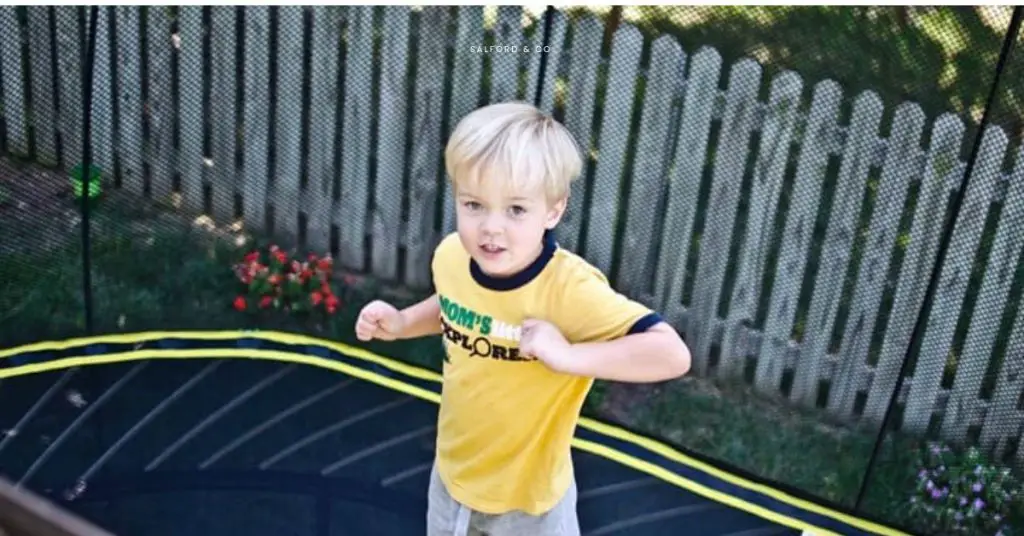
Here are some important factors to consider:
Size: Consider the available space in your yard and choose a trampoline size that fits comfortably. Measure the area to ensure there is ample clearance around the trampoline to prevent accidents.
Shape: Decide on the shape of the trampoline based on your preferences and specific needs. Round trampolines are popular for general use, while rectangular trampolines offer superior bounce for gymnastic or acrobatic activities.
Weight Capacity: Check the weight capacity of the trampoline to ensure it can safely accommodate the intended users. Consider the combined weight of all potential users to select a trampoline with an appropriate weight limit.
User Age Range: Trampolines are often designed with specific age ranges in mind. Some models are suitable for children, while others cater to teenagers or adults. Consider the intended users and choose a trampoline that suits their age range.
Additional Features:
In addition to the basic components of a trampoline, there are several additional features and accessories that you can consider to enhance safety, durability, and overall enjoyment. Here are some notable features to explore:
Enclosures:
Safety enclosures, consisting of netting systems surrounding the trampoline, are highly recommended to prevent users from falling off. Ensure that the enclosure is sturdy, properly installed, and free from gaps or tears.
Padding:
Look for trampolines with sufficient padding on the frame, springs, and surrounding areas to reduce the risk of injuries from impact. High-quality and durable padding materials are essential for long-term safety.
Anchor Systems:
Trampolines should be properly anchored to the ground to prevent tipping or displacement during use, especially in windy conditions. Some trampolines come with anchor kits or systems to ensure stability.
Weather Protection:
Consider trampolines that come with weather-resistant materials or covers to protect against rain, snow, or UV damage. This feature can prolong the lifespan of the trampoline and maintain its safety and durability.
By considering the different trampoline types and their features, as well as factors like size, shape, weight capacity, and user age range, you can make an informed decision when selecting a trampoline.
Additionally, paying attention to features such as enclosures, padding, and anchor systems enhances safety and overall enjoyment. Remember to prioritize safety and choose a trampoline that suits your specific needs and preferences.
Preparing the Backyard for Trampoline Installation
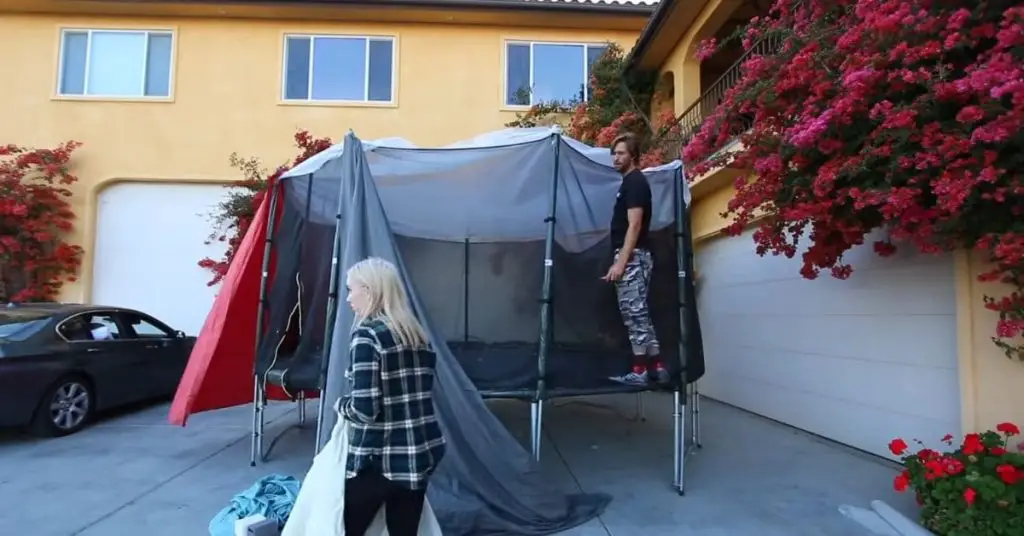
Before installing a trampoline in your backyard, it’s essential to properly prepare the area to ensure a safe and enjoyable experience.
This involves clearing the space, addressing potential hazards, and checking soil conditions and drainage.
Follow these steps to prepare your backyard for trampoline installation:
Clearing the Area and Ensuring a Level Surface:
Begin by clearing the designated area where you plan to install the trampoline. Remove any objects such as furniture, toys, or debris that could pose a hazard during trampoline use. Clearing the area provides a safe and unobstructed space for jumping.
Next, ensure that the surface is level. A level surface is crucial for the stability and safe operation of the trampoline. Remove any bumps, rocks, or other obstacles that may affect the evenness of the ground. Use a level tool to check for any uneven spots and make necessary adjustments.
Addressing Potential Hazards:
Identify and address potential hazards in the surrounding area that could interfere with trampoline usage. Some common hazards include:
Tree Branches: Trim any overhanging tree branches that could come into contact with the trampoline or obstruct the jumping space. Falling branches can pose a safety risk.
Fences or Walls: Ensure there is sufficient clearance between the trampoline and any surrounding fences or walls. Leave ample space to prevent users from colliding with these structures during jumping.
Uneven Ground: If the ground is uneven, consider leveling it or creating a suitable foundation. Uneven ground can affect the stability and safety of the trampoline. Use compacted soil or install a concrete or wooden base, if needed.
Checking Soil Conditions and Drainage:
Assess the soil conditions in the chosen area. Avoid installing the trampoline on soft or sandy soil, as it may lead to sinking or instability. If the soil is not ideal, consider adding a layer of compacted gravel or creating a solid base using concrete or wooden platforms.
Additionally, check the drainage in the area. Ensure that the ground does not accumulate water, as it can make the trampoline slippery and create unsafe conditions. If there are drainage issues, consider addressing them by regrading the area or adding drainage systems.
By properly preparing your backyard for trampoline installation, you can create a safe and enjoyable environment for trampoline use.
Clearing the area, addressing potential hazards, and ensuring a level surface with suitable soil conditions and proper drainage are essential steps to promote the longevity and safety of your trampoline.
Installation Process for a Trampoline
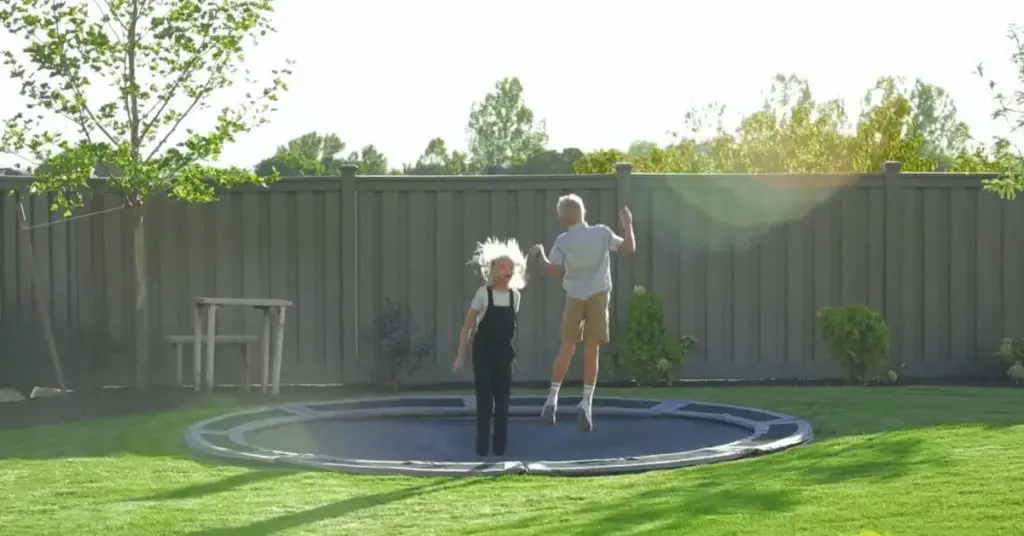
Assembling a trampoline requires careful attention to ensure proper installation, stability, and safety.
Here is a step-by-step guide outlining the installation process, highlighting important safety precautions, and discussing anchoring methods for stability and wind resistance:
Step 1: Read the Instruction Manual
Start by thoroughly reading the instruction manual provided by the trampoline manufacturer. Familiarize yourself with the specific assembly steps, safety guidelines, and any recommended tools or accessories.
Step 2: Choose a Suitable Location
Select a suitable location in your backyard for the trampoline. Ensure there is enough space around it for safe jumping and clearance from any potential hazards like trees, fences, or structures.
Step 3: Lay Out the Trampoline Parts
Spread out all the trampoline parts on the ground near the installation site. Take inventory to ensure you have all the required components and inspect them for any damage.
Step 4: Assemble the Frame
Start by assembling the trampoline frame according to the manufacturer’s instructions. Typically, this involves connecting the frame sections using provided connectors or screws. Use the recommended tools and ensure all connections are secure.
Step 5: Attach the Springs
Attach the springs to the frame and the jumping mat. Begin by attaching one end of a spring to a designated hook on the frame. Stretch the spring and attach the other end to the corresponding hook on the mat. Repeat this process for all springs, evenly spacing them around the frame.
Step 6: Install the Jumping Mat
Carefully place the jumping mat on the trampoline frame, ensuring it is centered and properly aligned. Attach the mat to the frame using the hooks or straps provided. Make sure the mat is taut and free from wrinkles or sagging.
Step 7: Install Safety Enclosure (If Applicable)
If your trampoline includes a safety enclosure, assemble it according to the manufacturer’s instructions. This typically involves attaching the poles to the frame and securing the netting. Ensure the enclosure is properly tensioned and free from any gaps or tears.
Step 8: Secure the Padding
Attach the padding to cover the springs and frame edges. Ensure the padding is properly aligned, securely fastened, and covers all potential impact areas. Check for any signs of wear or damage and replace if necessary.
Step 9: Conduct a Safety Inspection
Before allowing anyone to use the trampoline, conduct a thorough safety inspection. Check all connections, springs, and mat attachments to ensure they are secure.
Inspect the frame, padding, and enclosure for any damage or wear. Clear the area around the trampoline from any objects or debris.
Important Safety Precautions during Assembly:
- Follow the manufacturer’s instructions carefully and ensure all steps are performed correctly.
- Use the recommended tools and hardware provided by the manufacturer.
- Ensure the trampoline is installed on a level surface to maintain stability.
- Do not attempt assembly in adverse weather conditions, such as strong winds or rain.
- During assembly, wear appropriate protective gear, such as gloves and safety goggles.
Anchoring Methods for Stability and Wind Resistance:
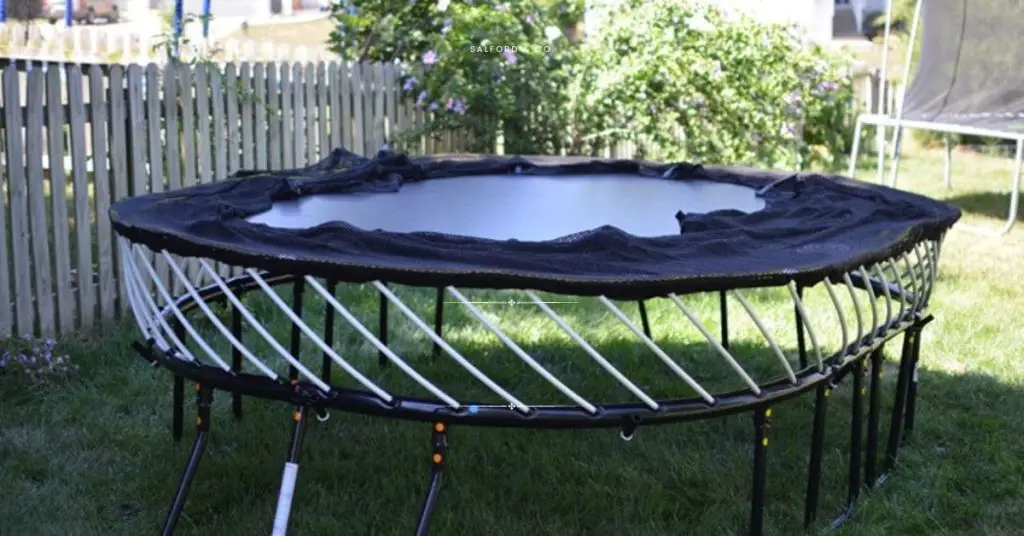
Proper anchoring is crucial to ensure trampoline stability and resistance to wind. Consider the following anchoring methods:
Ground Stakes: Most trampolines come with ground stakes that can be driven into the ground.
Place the stakes through designated holes in the frame and secure them firmly in the ground to prevent the trampoline from shifting or tipping.
Anchor Kits: Some trampoline manufacturers provide anchor kits that include straps or cables designed to attach to the trampoline frame and anchor points in the ground. Follow the manufacturer’s instructions to properly secure the trampoline using the anchor kit.
Concrete Anchors: In areas prone to strong winds or if you desire additional stability, you can consider using concrete anchors. This method involves burying anchor plates or brackets in the ground and securing them with concrete.
The trampoline frame is then attached to these anchor points using appropriate hardware.
Sandbag or Weighted Base: For temporary or portable trampolines, you can use sandbags or weighted bases to provide stability. Place sandbags or weights on the base legs or on the frame to prevent the trampoline from moving during use.
When anchoring the trampoline, ensure that the anchor points are securely fastened and that the connections are regularly inspected for any signs of wear or loosening.
It’s important to note that even with proper anchoring, trampolines should not be used during severe weather conditions, such as storms or high winds. Disassembling and storing the trampoline during such times is recommended to prevent damage and maintain safety.
Always follow the manufacturer’s guidelines and recommendations regarding anchoring methods for your trampoline model.
By following the step-by-step installation instructions, adhering to important safety precautions, and utilizing appropriate anchoring methods, you can ensure that your trampoline is properly assembled, stable, and resistant to wind forces.
This provides a safer environment for users and enhances the overall enjoyment of the trampoline experience.
Maintenance and Upkeep of a Trampoline
Regular maintenance and upkeep are essential to ensure the longevity, safety, and optimal performance of your trampoline. This involves routine cleaning and inspection, seasonal maintenance tasks, and addressing potential repairs or replacements.
Follow these guidelines to maintain your trampoline:
Routine Cleaning and Inspection:
- Clean the jumping mat regularly using a soft brush or cloth and mild soap. Rinse off any dirt, debris, or stains with water. Avoid using harsh chemicals or abrasive cleaners that may damage the mat.
- Clean the frame, springs, and padding periodically to remove dirt, leaves, or other debris. Use a damp cloth or gentle cleaning solution if necessary.
- Inspect the trampoline for any wear, damage, or loose connections. Check the frame, springs, padding, and enclosure (if applicable). Look for tears, frayed parts, or rust.
- Tighten any loose screws, bolts, or connectors. Replace any damaged or missing parts promptly.
- Ensure that the safety enclosure, if present, is intact, with no tears or gaps. Check the netting, poles, and connections for stability and security.
Seasonal Maintenance Tasks and Best Practices:
- Before each season, thoroughly inspect the trampoline for any damage, especially if it has been stored or unused for an extended period. Repair or replace any worn or damaged parts before use.
- Check the trampoline’s stability and level. Adjust the legs or anchor points if needed.
- Inspect the netting and poles for any wear or damage if your trampoline has a safety enclosure. Replace any damaged components.
- Remove any accumulated debris, leaves, or water from the trampoline surface. Ensure the drainage system is properly functioning to prevent water accumulation during rainy seasons.
- Consider disassembling the trampoline and storing it in a dry and sheltered location during winter or inclement weather to protect it from harsh conditions.
- Limit trampoline usage during extreme weather conditions like storms or high winds to prevent potential damage.
Potential Repairs or Replacements:
- Springs: Over time, springs may lose tension or become worn. Inspect them regularly for any signs of damage or stretching. Replace any broken or damaged springs promptly to maintain optimal bounce performance and safety.
- Mat: If the jumping mat shows signs of significant wear, such as tears or sagging, consider replacing it to ensure a safe and enjoyable jumping experience.
- Padding: Check the padding regularly for any signs of wear, such as tears or deterioration. If the padding becomes worn or no longer provides sufficient protection, replace it to prevent injuries.
- Frame and Enclosure: Inspect the frame and safety enclosure components for rust, corrosion, or structural damage. Contact the manufacturer for repair or replacement options if significant damage is present.
Establishing Rules and Supervision for Trampoline Usage
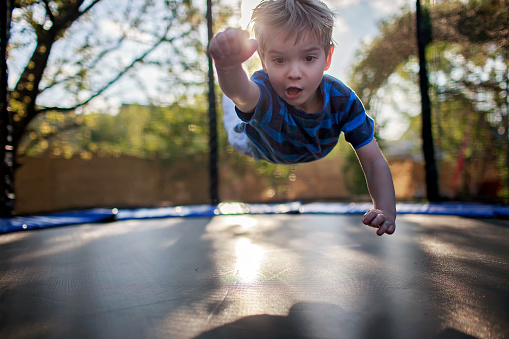
When it comes to trampoline usage, setting clear rules and providing adequate supervision is crucial for ensuring the safety and well-being of everyone involved.
Here are some important considerations and guidelines for establishing rules and supervision:
Set Clear Usage Rules:
- Establish age-appropriate rules that are easy to understand and enforce. Communicate these rules to all trampoline users, including family members and friends.
- Emphasize the importance of following safety guidelines, such as no somersaults, one person jumping at a time, and no pushing or rough play.
- Prohibit the use of trampolines during adverse weather conditions, such as rain, storms, or strong winds.
- Encourage users to remove shoes, sharp objects, and any other potential hazards before entering the trampoline area.
- Limit trampoline usage to designated hours or time slots to avoid excessive fatigue or overuse.
Recommend Supervision Guidelines:
- Assign responsible and capable adults to supervise trampoline activities, especially when children are using the trampoline.
- Ensure that supervisors understand the safety rules and guidelines and are attentive to the actions of the trampoline users.
- Supervisors should remain present near the trampoline area, keeping a watchful eye on the users and intervening if any unsafe behavior is observed.
- Educate supervisors on how to respond in case of an accident or injury, including knowledge of basic first aid techniques.
Promote Safe Trampoline Usage:
- Encourage users to warm up and stretch before using the trampoline to minimize the risk of muscle strain or injury.
- Educate all users on proper jumping techniques, such as jumping in the center of the mat and landing with both feet together.
- Emphasize the importance of jumping within their skill level and avoiding risky maneuvers.
- Discourage jumping off the trampoline or attempting to exit while it is in motion. Users should climb down using the ladder or designated exit point.
- Encourage users to regularly inspect the trampoline for any signs of wear or damage and report it to the responsible adult or trampoline owner.
- Promote open communication among trampoline users and encourage them to share any safety concerns or potential hazards they may identify.
Lead by Example:
- As adults, demonstrate safe trampoline usage by adhering to the established rules and guidelines.
- Avoid engaging in unsafe behavior, such as performing dangerous stunts or exceeding weight capacity limits.
- Encourage family and friends to prioritize safety over excitement and remind them of the potential risks involved.
Liability and Insurance Considerations for Trampolines
When owning a trampoline, it’s important to be aware of the potential liability risks and take necessary precautions to protect yourself and others. Here are some key points to consider regarding liability and insurance coverage:
Review Homeowner’s Insurance Policy:
- Check your homeowner’s insurance policy to understand if it covers trampoline-related incidents. Some insurance policies may have specific exclusions or limitations regarding trampolines.
- Pay attention to any requirements or conditions stated by your insurance provider regarding trampoline ownership, such as safety precautions or additional endorsements needed for coverage.
Potential Liability Risks:
Trampolines can pose certain risks, including falls, collisions, and injuries. As a trampoline owner, you may be held liable for any injuries or damages that occur on your property.
You can be held responsible for injuries to both invited guests and trespassers, so it’s crucial to take precautions to minimize potential hazards and promote safe usage.
Taking Precautions:
Implement safety measures, such as installing safety enclosures and padding, and following usage rules, to reduce the risk of accidents and injuries.
Regularly inspect and maintain the trampoline to ensure it remains in good working condition.
Properly supervise trampoline activities, especially when children are involved, and enforce safety rules to minimize the chances of accidents.
Consult with an Insurance Agent:
- Consult with an insurance agent to review your homeowner’s insurance policy and discuss trampoline-related coverage options.
- An insurance agent can guide any specific requirements or endorsements needed to ensure adequate coverage for trampoline-related incidents.
- They can also advise on any additional liability coverage or umbrella policies that may provide extra protection in case of accidents or injuries.
It’s important to note that insurance policies and regulations may vary depending on your location and insurance provider. Consulting with an insurance professional will help you understand the specific terms, conditions, and coverage options available to you.
Taking the necessary precautions, following safety guidelines, and reviewing your insurance policy will help protect yourself and others from potential liabilities associated with trampoline ownership. Prioritizing safety and maintaining appropriate insurance coverage are crucial steps in mitigating risks and ensuring peace of mind.
Trampoline neighbor law
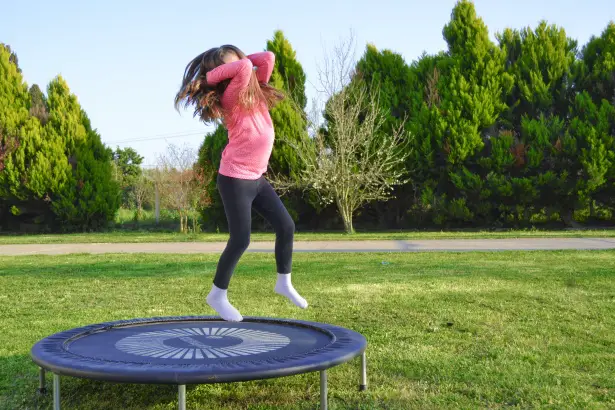
Trampoline neighbor laws can vary depending on your specific location, as regulations and ordinances differ from one jurisdiction to another.
It’s important to research and understand the laws and regulations that govern trampolines in your area to ensure compliance and maintain positive relationships with your neighbors.
Here are some common considerations:
Zoning and Permits: Check if your local zoning regulations permit trampolines in residential areas. Some jurisdictions may have restrictions on their use or require permits for installation.
Setback Requirements: Setback requirements refer to the minimum distance a trampoline must be placed from property lines or neighboring structures. This ensures safety and prevents encroachment on neighboring properties.
Height Restrictions: Some areas may have height restrictions for structures, including trampolines, to preserve sightlines and aesthetics or prevent potential hazards.
Safety Measures: Many jurisdictions have guidelines or laws regarding trampoline safety measures, such as using safety nets, enclosures, or padding to reduce the risk of accidents and injuries.
Noise Regulations: Noise can be a concern for neighbors. Be mindful of any noise ordinances that may apply to trampoline use, particularly during certain hours when excessive noise is restricted.
To obtain accurate and up-to-date information about trampoline neighbor laws, it’s advisable to consult local government offices and homeowner associations or seek legal advice if necessary.
Understanding and respecting these laws will help ensure a harmonious relationship with your neighbors while enjoying your trampoline safely.
FAQs
Q.1 Can you have a trampoline in your front yard
Whether you can have a trampoline in your front yard depends on local regulations and any specific rules or restrictions in your area. It’s important to check with your local municipality or homeowners association to understand if there are any limitations or guidelines regarding the placement of trampolines in front yards.
Some areas may have restrictions for safety or aesthetic reasons, while others may allow it. Always consult the relevant authorities to ensure compliance with any regulations before placing a trampoline in your front yard.
Q.2 What should I consider in terms of available space?
Ensure that you have sufficient space in your backyard to accommodate the trampoline. Consider factors such as the size of the trampoline, clearance around it, and potential obstructions like trees, fences, or structures.
Q.3 How can I ensure safety when using a trampoline?
Safety should be a top priority. Follow recommended guidelines, such as installing safety nets or enclosures, using proper padding on the springs and frame, and supervising children during use.
Educate yourself and others on proper jumping techniques and precautions to minimize the risk of injuries.
Q.4 What maintenance does a trampoline require?
Trampolines require regular maintenance for safety and durability. This includes inspecting and repairing the trampoline as needed, cleaning the mat and springs, and protecting it from weather-related damage.
Q.5 Will installing a trampoline affect my homeowner’s insurance?
It’s important to contact your insurance provider to understand any implications. Installing a trampoline could potentially impact your homeowner’s insurance policy, and you may need to consider additional coverage.
Q.6 How can I ensure the longevity of my trampoline?
To prolong the lifespan of your trampoline, follow the manufacturer’s guidelines for assembly, usage, and maintenance. Regularly check for wear and tear, address any issues promptly, and protect the trampoline from extreme weather conditions.
Q.7 What age groups can use a trampoline?
People of various age groups can enjoy trampolines, but supervision and safety precautions are especially important for younger children. Follow the manufacturer’s recommendations regarding the minimum age and weight limits for safe usage.
Conclusion
In conclusion, this complete guide has provided you with the necessary information to determine whether you can put a trampoline in your backyard and how to do it safely.
We started by assessing the feasibility of trampoline installation, considering local regulations, available space, and potential safety hazards. Safety considerations were emphasized throughout the guide, with recommended safety measures, installation tips, and maintenance guidelines.
Choosing the right trampoline was another crucial aspect, highlighting different types, features, and factors. Preparing the backyard for installation involved clearing the area, addressing potential hazards, and checking soil conditions and drainage.
The step-by-step installation process was outlined, including reading the instruction manual, selecting a suitable location, assembling the frame, attaching springs and mats, installing safety enclosures, securing padding, and conducting a safety inspection.
Safety precautions during assembly were also emphasized, such as anchoring methods for stability and wind resistance.
Maintenance and upkeep play a vital role in ensuring the longevity and safety of your trampoline. Regular cleaning, inspection, seasonal maintenance tasks, and prompt repairs or replacements were discussed.
Establishing rules and supervision for trampoline usage is essential for safety. Setting clear rules, recommending supervision guidelines, and promoting safe usage are key to preventing accidents and injuries.
Liability and insurance considerations were addressed, including reviewing your homeowner’s insurance policy, understanding potential liability risks, taking precautions, and consulting with an insurance agent to ensure appropriate coverage.
Remember to familiarize yourself and your family with local laws and regulations, prioritize safety, and supervise trampoline usage to create a fun and safe environment. With this guide, you’re well-equipped to enjoy the excitement and joy of having a trampoline in your backyard.
After reading this complete guide on whether you can put a trampoline in your backyard, we hope you now understand clearly. If you have any questions, please feel free to leave a comment below!

